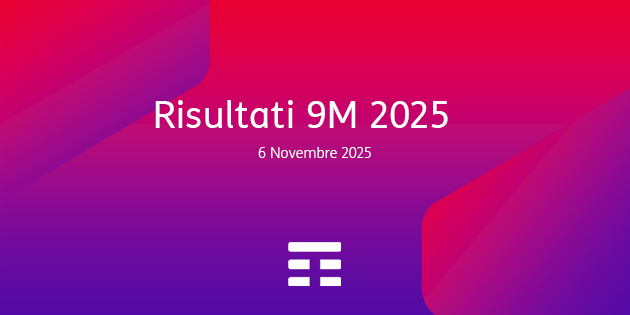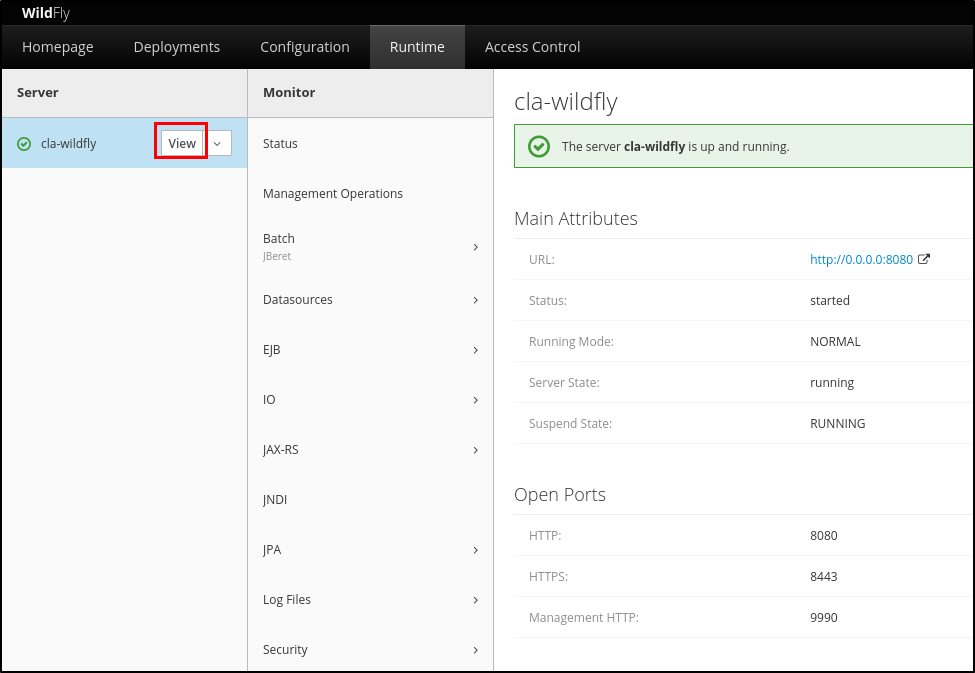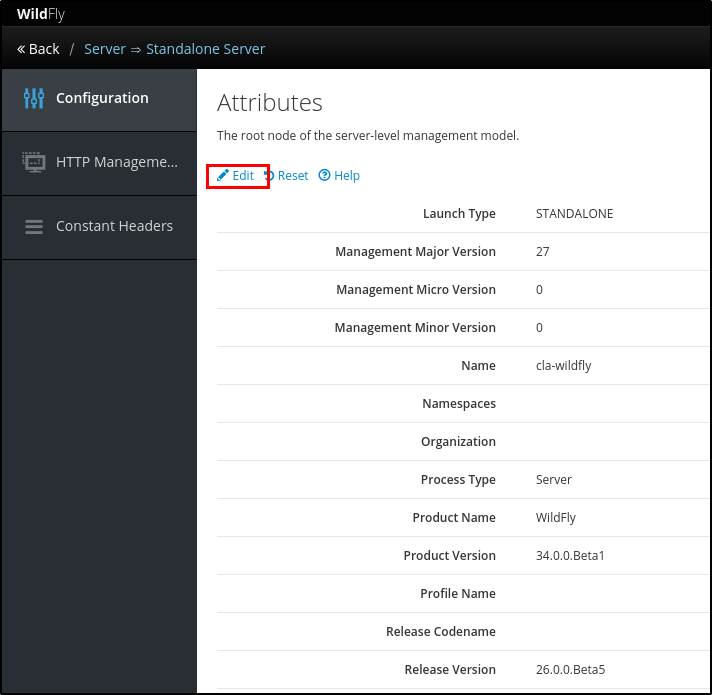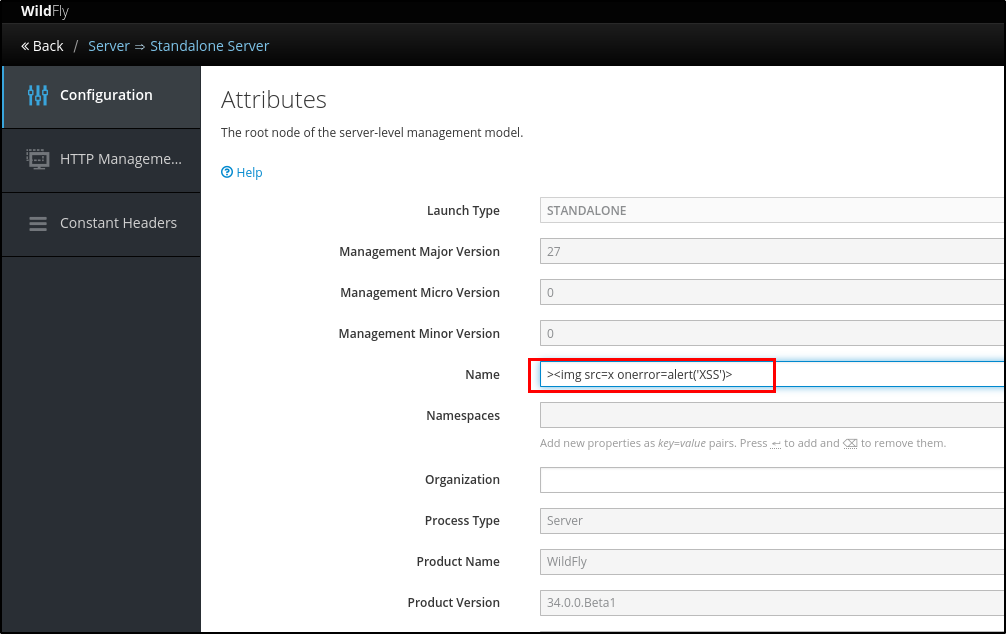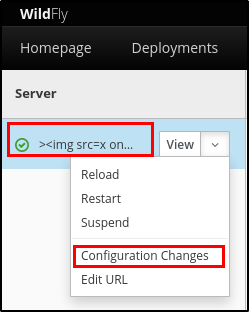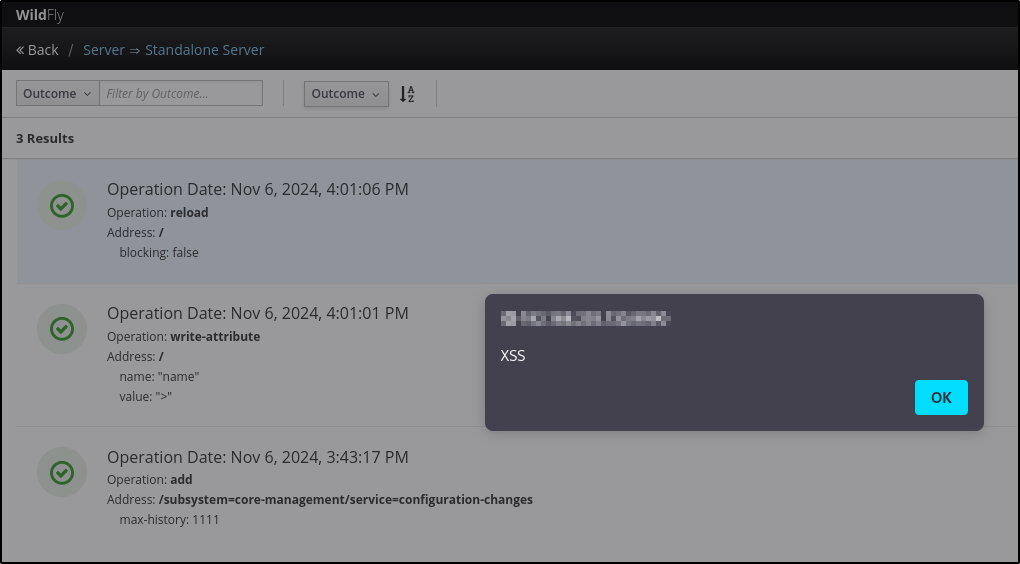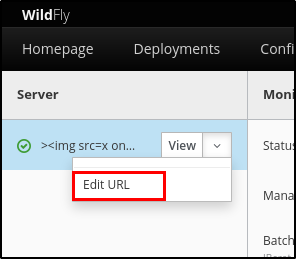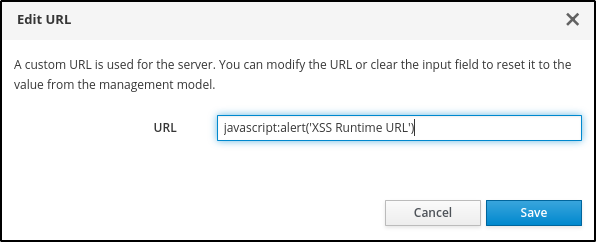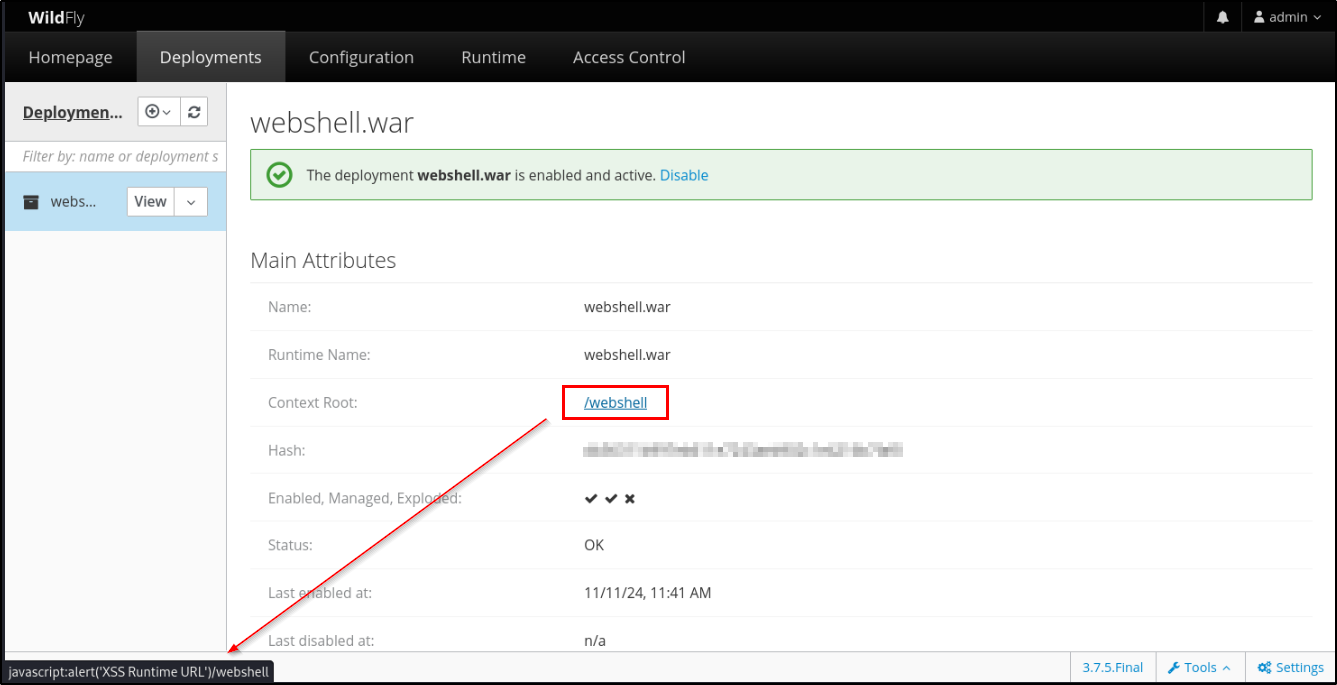Security Impact
If an attacker can control a script that is executed in the victim's browser, then they can typically fully compromise that user. The attacker places their exploit into the application itself and simply waits for users to encounter it.
Amongst other things, the attacker can:
• Perform any action within the application that the user can perform.
• View any information that the user is able to view.
• Modify any information that the user is able to modify.
• Initiate interactions with other application users, including malicious attacks, that will appear to originate from the initial victim user.
2. Step-by-step instructions and PoC
A remote user, authenticated to the Management Console, can store malicious JavaScript code within the “URL” attribute, in the Standalone Server Runtime page. Successfully exploitation of this vulnerability can cause the extraction of some information and/or the execution of arbitrary HTTP Request in the context of victim's session.
Affected Endpoints
· URL: http://[IP]:[PORT]/console/index.html#runtime;path=standalone-server-column~standalone-host-[HOST_NAME]
· Vulnerable Configuration Parameter: URL
Below the evidence with the vulnerability details and the payloads used.
Payload used to exploit the vulnerability:
javascript:alert('XSS Runtime URL')
As a first step, the attacker, in this case an ordinary “auditor” user, must be logged in the HAL Console and has to enter the Runtime session and click on the dropdown menu’s trigger relating the server and select “Edit URL”, as shown below:

